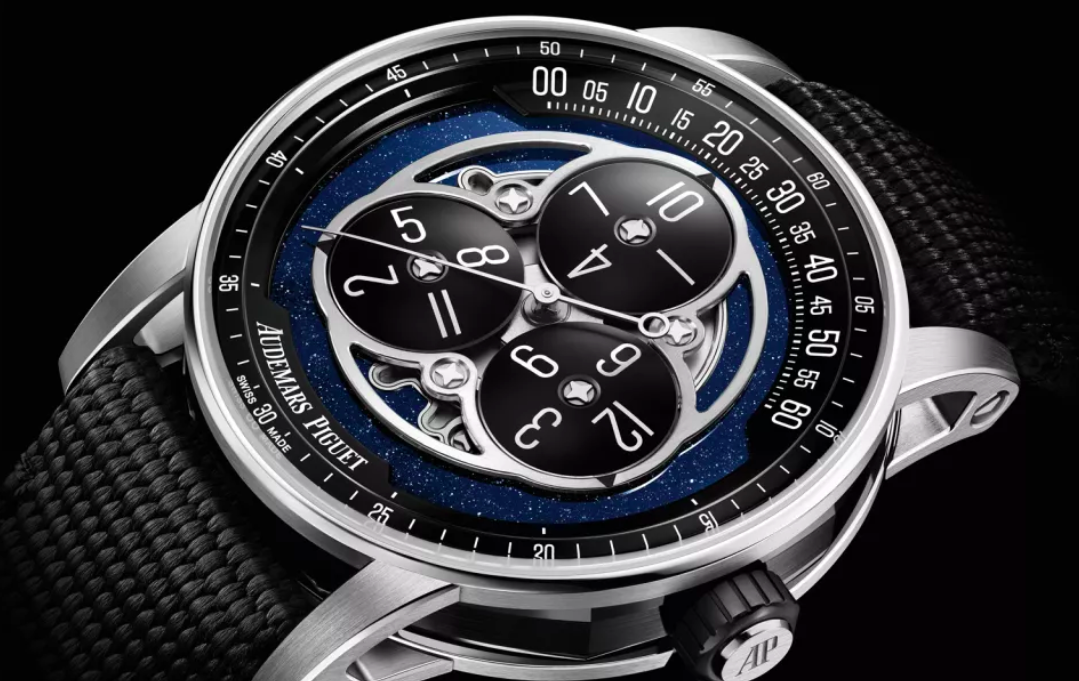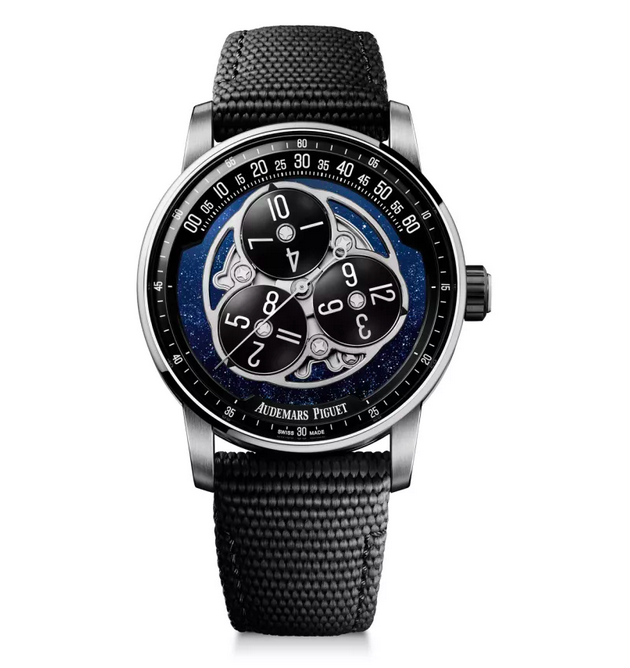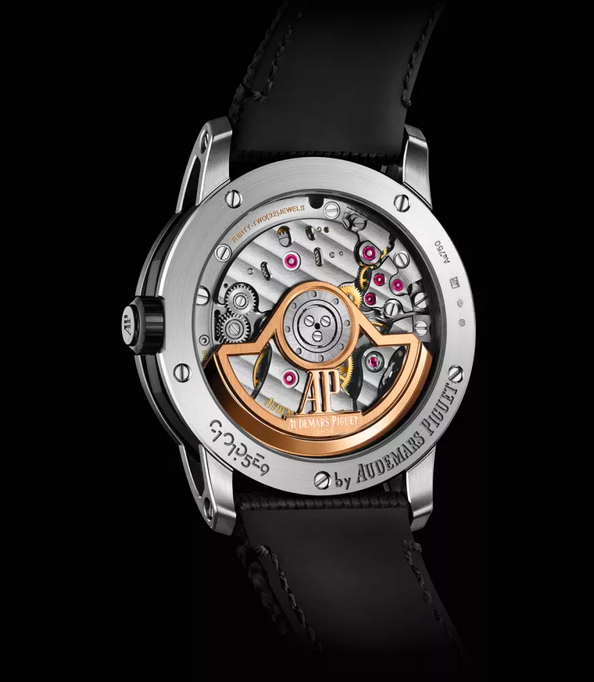How does it work

en
 English
English
 Deutsch
Deutsch
 Italiano
Italiano
11 January

Historical timekeeping traditions are rethought by Audemars Piguet, which integrates a 17th-century complication into the new Code 11.59 by Audemars Piguet Starwheel watch. The wandering hours complication, by displaying the hours using satellites that appear to drift along a minute scale, imbues the classic time-telling method with an elegant romanticism.
‘The Code 11:59 by Audemars Piguet Starwheel is a great example of the magic blend of past and future, simplicity and complexity,’ says Sébastian Vivas, heritage and museum director at Audemars Piguet. ‘The three black discs seem to rotate like satellites over a night sky of aventurine. Their domed shape perfectly matches the complex curves of the bezel and the glass. The black ceramic middle combining edges and curves echoes the three discs. Personally, I consider this new example of Code 11:59 as one of the best achieved in terms of language form, and expression of the subtle and poetic way to express the time.’

The watch nods to the night clocks invented in the 1650s by Pier Tommaso Campani, following a request from pope Alexander VII. The clock, which encompassed an oil lamp and hours and quarters cut into a brass plate, was readable in the dark. Over the centuries, this technicality evolved into the wandering hours mechanism, which later still developed into the jumping hours complication.
In September 1989, Audemars Piguet became fascinated with this history, launching the first Starwheel model 18 months later. ‘This was the perfect timing: after the quartz crisis, all horizons were open,’ Vivas adds. ‘For the first time in history, the wandering hours mechanism was entirely visible. This small complication equipped several models of the brand, including round watches, Millenary, John Schaeffer and pocket watches, and it soon inspired other brands. At the beginning of the 21st century, Audemars Piguet decided to focus its creativity on other collections, such as the Royal Oak Offshore and on other small complications such as the time zones.’

The Starwheel, which had amassed a loyal following, was brought back by popular request after the launch of the Code 11:59 collection in 2019, which included sketches of a starwheel satellite display, and received a warm response. ’The timing is perfect, as the Starwheel fits perfectly with the new round line of the brand,’ Vivas says. ‘At the end of the Royal Oak 50th anniversary celebrations, it opens new horizons, which will expand during 2023.’
The new timepiece marries the case of the Code 11.59 models with a juxtaposition of materials including aventurine, 18ct white gold and black ceramic. ‘In the field of wandering hour mechanisms, the watchmakers have increased the reliability of the system, replacing the delicate jumping discs with a train-gear system,’ says Vivas of the technical advances since the original.
‘A machine was developed to test the system at high speed, in both directions (forwards and backwards). To be lighter, the discs have been made in aluminium. Their domed shape increases their resistance and readability. A central second hand was added: its 360-degree rotation in a minute contrasts with the slow motion of the three discs (one tour in 3 hours). The designer has looked for the perfect balance between simplicity and complexity, combining curved facets, curved glass and discs with the clarity of the colours and shapes. The watch is highly contemporary, with a little touch of vintage.’
All article from wallpaper.com